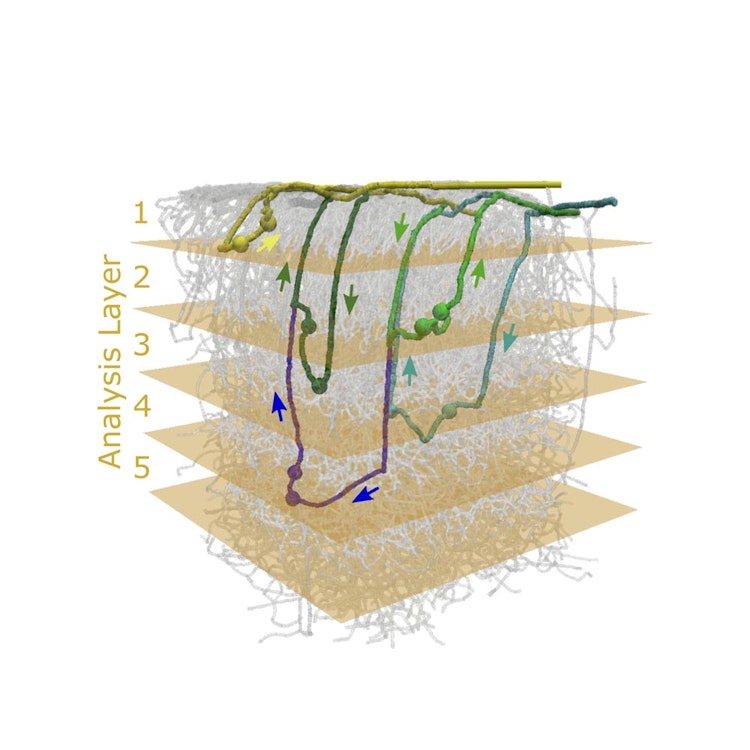
Depth-dependent flow and pressure characteristics in cortical microvascular networks
A better knowledge of the flow and pressure distribution in realistic microvascular networks is needed for improving our understanding of neurovascular coupling mechanisms and the related measurement techniques. Here, numerical simulations with discrete tracking of red blood cells (RBCs) are performed in three realistic microvascular networks from the mouse cerebral cortex. Our analysis is based on trajectories of individual RBCs and focuses on layer-specific flow phenomena until a cortical depth of 1 mm. The individual RBC trajectories reveal that in the capillary bed RBCs preferentially move in plane. Hence, the capillary flow field shows laminar patterns and a layer-specific analysis is valid. We demonstrate that for RBCs entering the capillary bed close to the cortical surface (< 400 μm) the largest pressure drop takes place in the capillaries (37%), while for deeper regions arterioles are responsible for 61% of the total pressure drop. Further flow characteristics, such as capillary transit time or RBC velocity, also vary significantly over cortical depth. Comparison of purely topological characteristics with flow-based ones shows that a combined interpretation of topology and flow is indispensable. Our results provide evidence that it is crucial to consider layer-specific differences for all investigations related to the flow and pressure distribution in the cortical vasculature. These findings support the hypothesis that for an efficient oxygen up-regulation at least two regulation mechanisms must be playing hand in hand, namely cerebral blood flow increase and microvascular flow homogenization. However, the contribution of both regulation mechanisms to oxygen up-regulation likely varies over depth.
Download
schmid_2017.pdfResearchers


